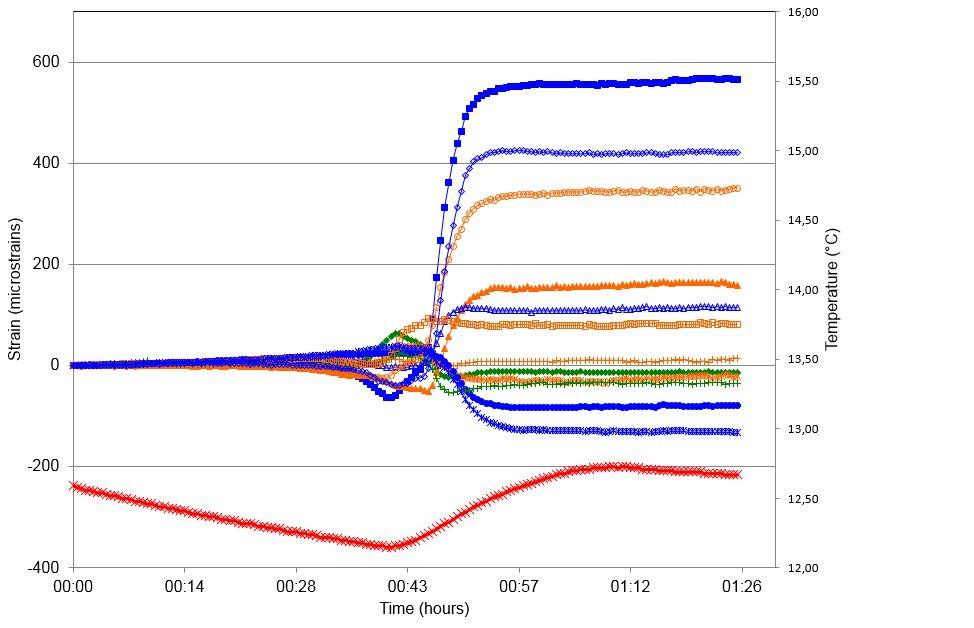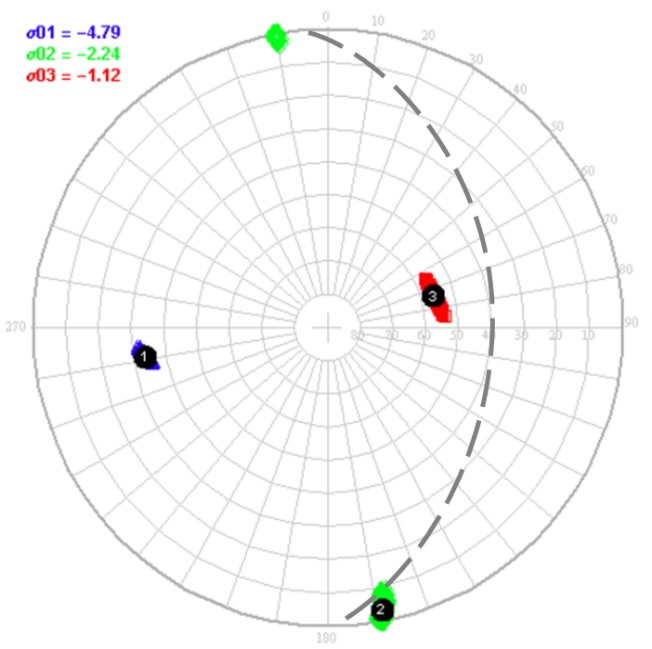

Case study of a complete 3D stress field diagnosis in a large gravity dam
INERIS performed successfully 3D stress measurements in a large gravity dam using the overcoring method. Representative test zones were investigated to compare measured stresses to those computed with an advanced numerical model including swelling rheology of the concrete. The applied methodology proved successful to yield a complete reliable picture of the 3D stress field in the geostructure, reinforcing the quality of the prediction of dam movements in the future and improving decision making
Context
To evaluate the impact of the ageing of dams, operators monitor closely the longterm evolution of physical key parameters. In particular, significant strains and apparent disorders as disseminated cracks are forensics of unexpected stresses developing in the geostructure. In this case, the dam, built in the Alpine area during the early 30’s and now operated by Electricité de France (EdF), suffers from Alkali Aggregate Reaction (AAR) of its constitutive cement, leading to a swelling pressure and then to pervasive cracking. Therefore reliable characterization of the stresses exerting in the geostructure was needed to ensure the diagnosis of the dam integrity and to assess its overall safety. However, field stress measurements remain a challenging issue, especially in this context where the most interesting zones to investigate revealed to be located at the heart of the structure close to the rock-concrete interface. Heterogeneity of the host material at the scale of a stress cell and the low temperature of the dam were challenging conditions to succeed such measurements.Solution
The methodology chosen was to assess the stress field of the dam following two independent approaches: Finite Element (FE) analysis of the geostructure and in situ stress measurements. These approaches were performed independently to avoid any bias in the field measurement interpretation and ensure reliable comparison.
First, concerning the FE approach, effects of AAR were considered by EdF staff taking into account the interactions between AAR pressure and creep, the swelling anisotropy induced by oriented cracking and the moisture, all three parameters governing the AAR swelling effect on the stress field. Once this AAR rheological model fitted on laboratory tests on core samples, a FE inverse analysis was undertaken to calibrate the best numerical model of the dam constrained on its wellknown vertical displacement monitored over the past decades. From there, numerical analysis were computed to assess the 3D stress field and then to select the four best zones of interest to undertake in situ measurements. The model is developed by EdF in collaboration with LMDC Toulouse and is implemented in EdF Code_Aster
Second, INERIS performed overcoring stress tests based on the CSIRO HI Cell at these four locations with a quality control criterion of at least two successful tests on each of them. All tests were run in the concrete near the rock foundation, that is 20 meters far from the dam surface, with successive tests along the same borehole distant of one meter from each other.

Overcored sample

Recorded strains during an overcoring test (red curve shows the temperature).
Since the concrete temperature was naturally too low for a correct hardening of the epoxy glue, heated water was forced to circulate to warm the pilot hole hosting the cell. Moreover, heating resistors were adapted to the rod system to reduce the cooling locally following the set up of the cell. This procedure limited the epoxy curing time to 20 hours while yielding excellent bonding of the gauges. The automatic monitoring of all strains, cell temperature and drilling parameters as well as the performance of the biaxial test on each core offered a thorough checking of the data quality.
The concrete being melted with gyps could not be considered as homogeneous. Indeed at the scale of the rosettes of strain gauges, one rosette could be in contact with gyps, another with concrete. This heterogeneity was revealed through the different responses of the three orthoradial gauges during the biaxial test. A correcting factor was determined for each rosette and introduced in the SYTGEOstress software to balancethe measured strains according to the local Young modulus compared to the average one.
For all four locations, excellent data quality was obtained between successive overcoring tests, yielding very coherent stress estimates. In a general manner the major principal stress σ1 was found to be parallel to the dam axis and perpendicular to the rock foundation. With principal stresses ranging from 1 to 6 MPa, with a global average near 2 MPa, the comparison of the results with numerical simulations showed an excellent consistency.
Lessons learned
The objective of the study was to quantitatively explain the geotechnical disorders observed in the dam and to obtain a comprehensive diagnosis of the integrity and safety of the swelling geostructure for the next future. The parallel approaches used advanced numerical modeling and in situ measurements, which was proved necessary to yield a reliable assessment of the integrity and safety of the dam.The methodology and experience developed during the project provide dam operators with a trusty procedure to diagnose accurately large dams suffering AAR, offering a great help in the decision making for an ascertained maintenance strategy.


Left : principal stresses computed and projected on a lower hemisphere. Uncertainty is graphically represented as centered colored stains. Gray-dotted line shows the estimated orientation of the rock foundation below zone 1. Right : 3D elevation view of the dam with the major principal stress σ1contours mapped on its downstream face. Modelling by EdF-CIH.